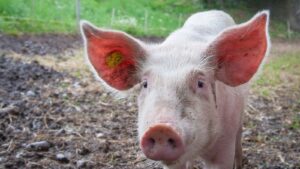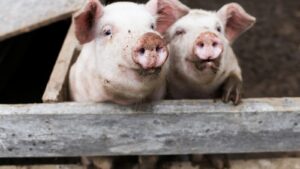Pigs, often misunderstood and underestimated, are fascinating creatures with a rich history and significant roles in ecosystems and human societies. Known for their intelligence, pigs are among the smartest animals, rivaling dogs and even some primates. Their ability to learn and adapt makes them unique in the animal kingdom. Similarly, web hosting for students offers a valuable opportunity to cultivate digital skills and create an online presence. Just as pigs contribute to their environments in meaningful ways, effective web hosting can empower students to showcase their projects, collaborate on initiatives, and engage with broader audiences, enriching their educational experiences.
Cute:Dbztsur7siw= Pig
 Pigs belong to the Suidae family, sharing genetic links with wild boars. They’re one of the most widely spread mammals, with a population exceeding 1 billion worldwide. Domestication began around 9,000 years ago in regions like the Near East and China. They thrive in diverse environments, from rural farms to urban areas, due to their adaptability and resilience. In a different context, the establishment of robust security protocols is crucial for safeguarding sensitive information in various fields. Just as pigs have adapted to various habitats, security protocols must evolve to address the changing landscape of threats and vulnerabilities, ensuring safety and resilience in our increasingly digital world.
Pigs belong to the Suidae family, sharing genetic links with wild boars. They’re one of the most widely spread mammals, with a population exceeding 1 billion worldwide. Domestication began around 9,000 years ago in regions like the Near East and China. They thrive in diverse environments, from rural farms to urban areas, due to their adaptability and resilience. In a different context, the establishment of robust security protocols is crucial for safeguarding sensitive information in various fields. Just as pigs have adapted to various habitats, security protocols must evolve to address the changing landscape of threats and vulnerabilities, ensuring safety and resilience in our increasingly digital world.
These animals possess remarkable intelligence, rivaling dogs and primates. Research shows that pigs have complex social hierarchies and can use tools, solve problems, and communicate effectively with their peers. Their cognitive abilities enable them to navigate intricate environments and engage with technological tasks when motivated by positive reinforcement.
Biological Characteristics
Pigs possess distinctive biological traits that have allowed them to thrive across diverse environments. Their physical and behavioral traits contribute to their success and integration into human societies.
 Pigs are medium-sized mammals with stout, cylindrical bodies. They have a thick neck, a short and flexible snout, and strong limbs. A pig’s head has a prominent snout, equipped with a specialized bone used for rooting and foraging. They have small eyes with relatively good vision and acute hearing, which help them detect predators and navigate their surroundings. Adult pigs weigh between 110 to 770 pounds (50 to 350 kg) depending on the breed and their diet. Pigs come in various colors, including pink, black, and brown, with some breeds exhibiting spots or stripes.
Pigs are medium-sized mammals with stout, cylindrical bodies. They have a thick neck, a short and flexible snout, and strong limbs. A pig’s head has a prominent snout, equipped with a specialized bone used for rooting and foraging. They have small eyes with relatively good vision and acute hearing, which help them detect predators and navigate their surroundings. Adult pigs weigh between 110 to 770 pounds (50 to 350 kg) depending on the breed and their diet. Pigs come in various colors, including pink, black, and brown, with some breeds exhibiting spots or stripes.
Pigs are social animals known for their complex interactions. They form groups called sounders, typically consisting of females and their offspring. In these groups, pigs establish hierarchies based on age and size, which dictate access to resources. Communication occurs through a series of vocalizations, such as grunts and squeals, alongside bodily cues like nudging. Pigs display problem-solving abilities and curiosity, often using their snouts to explore their environment.
Habitat and Distribution
 Pigs inhabit diverse environments across the globe. Wild pigs, such as boars, often occupy forests and grasslands in Europe, Asia, and parts of North Africa. These areas provide ample food and cover, essential for their survival. Domesticated pigs, however, show a wider distribution, thriving in almost all continents due to human intervention in agriculture.
Pigs inhabit diverse environments across the globe. Wild pigs, such as boars, often occupy forests and grasslands in Europe, Asia, and parts of North Africa. These areas provide ample food and cover, essential for their survival. Domesticated pigs, however, show a wider distribution, thriving in almost all continents due to human intervention in agriculture.
Rural farms remain the most common habitat for domesticated pigs, where they contribute significantly to the agricultural economy. For sustenance, pigs thrive on a diet of grains, vegetables, and kitchen waste, making them easy to maintain in various locales. With over a billion domesticated pigs, their presence spans continents like North America, South America, Asia, and Europe.
Urban expansion and changing farming practices contribute to pigs adapting to urban settings. Escaped or released pigs can establish feral populations, particularly in regions like Australia and the southern United States. These populations impact local ecosystems, presenting challenges and opportunities for biodiversity management. Understanding habitat versatility helps address issues related to pig farming and environmental conservation.
Intelligent Animals
Pigs are remarkable creatures with intelligence and adaptability that have earned them a significant place in both natural ecosystems and human society. Their ability to learn and interact socially highlights their cognitive skills, while their role in agriculture underscores their economic importance. As society continues to evolve, understanding and appreciating pigs’ contributions is crucial.
